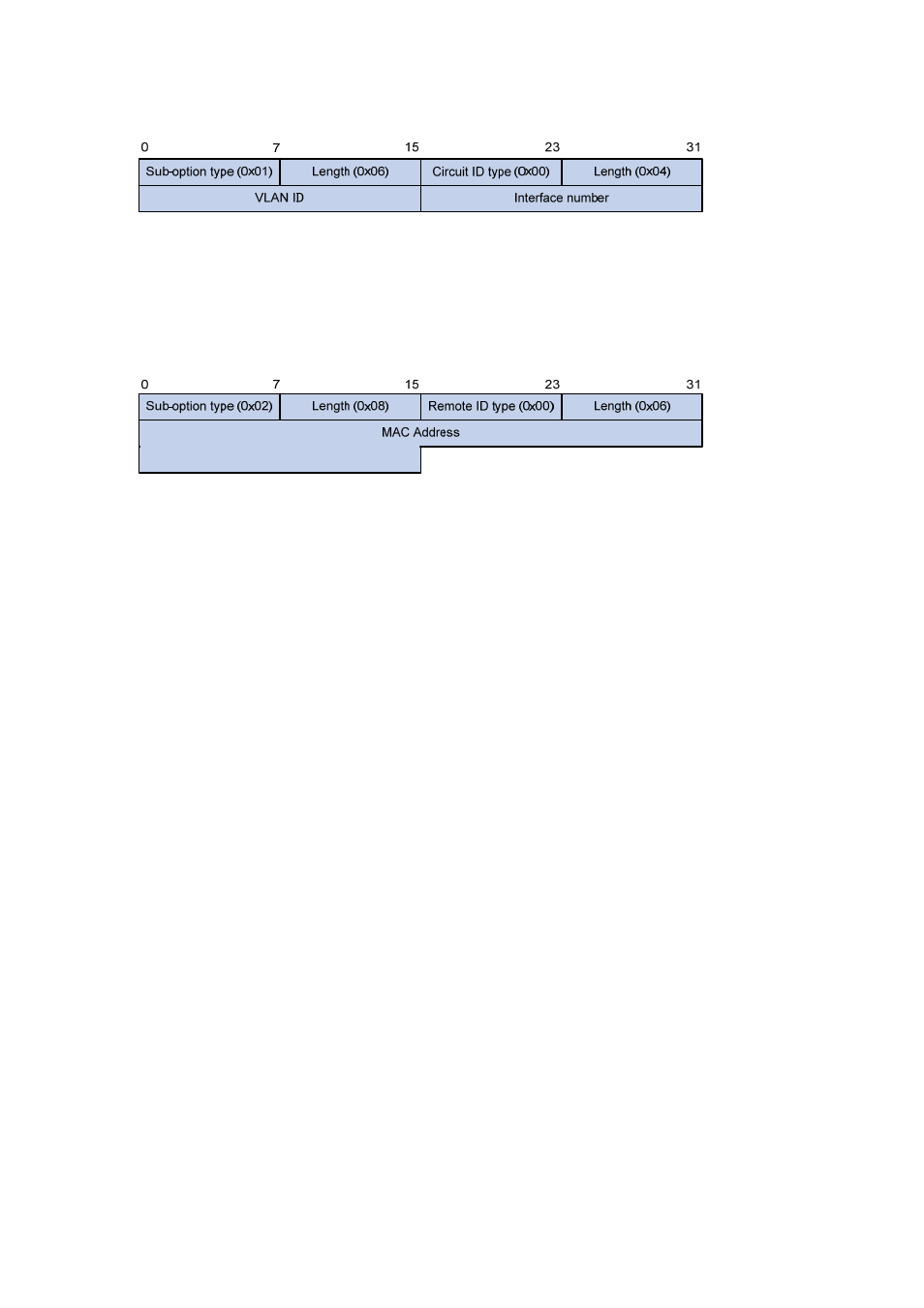Protocols and standards, Dhcp server configuration, Application environment – H3C Technologies H3C WX6000 Series Access Controllers User Manual
Page 201: Dhcp address pool, Address pool structure

26-6
Figure 26-5 Sub-option 1 in normal padding format
Sub-option 2: Padded with the MAC address of the DHCP relay agent interface or the MAC
address of the DHCP snooping device that received the client’s request. The following figure gives
its format. The value of the sub-option type is 2, and that of the remote ID type is 0.
Figure 26-6 Sub-option 2 in normal padding format
Protocols and Standards
RFC 2131: Dynamic Host Configuration Protocol
RFC 2132: DHCP Options and BOOTP Vendor Extensions
RFC 1542: Clarifications and Extensions for the Bootstrap Protocol
RFC 3046: DHCP Relay Agent Information Option
DHCP Server Configuration
Application environment
The DHCP server is well suited to the network where:
It is hard to implement manual configuration and centralized management.
The hosts are more than the assignable IP addresses and it is impossible to assign a fixed IP
address to each host. For example, an ISP limits the number of hosts accessing the Internet at a
time, so lots of hosts need to acquire IP addresses dynamically.
A few hosts need fixed IP addresses.
DHCP Address Pool
Address pool structure
In response to a client’s request, the DHCP server selects an idle IP address from an address pool and
sends it together with other parameters such as lease and DNS server address to the client.
The address pool database is organized as a tree. The root of the tree is the address pool for natural
networks, branches are address pools for subnets, and leaves are addresses statically bound to clients.
For the same level address pools, a previously configured pool has a higher selection priority than a
new one.
